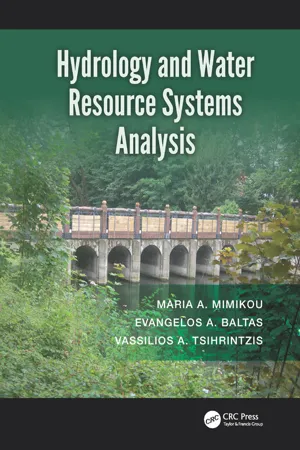
Hydrology and Water Resource Systems Analysis
- 448 pages
- English
- ePUB (mobile friendly)
- Available on iOS & Android
Hydrology and Water Resource Systems Analysis
About This Book
Hydrology and water resources analysis can be looked at together, but this is the only book which presents the relevant material and which bridges the gap between scientific processes and applications in one text. New methods and programs for solving hydrological problems are outlined in a concise and readily accessible form.
Hydrology and Water Resource Systems Analysis
includes a number of illustrations and tables, with fully solved example problems integrated within the text. It describes a systematic treatment of various surface water estimation techniques; and provides detailed treatment of theory and applications of groundwater flow for both steady-state and unsteady-state conditions; time series analysis and hydrological simulation; floodplain management; reservoir and stream flow routing; sedimentation and erosion hydraulics; urban hydrology; the hydrological design of basic hydraulic structures; storage spillways and energy dissipation for flood control, optimization techniques for water management projects; and methods for uncertainty analysis.
It is written for advanced undergraduate and graduate students and for practitioners. Hydrologists and water-related professionals will be helped with an unfamiliar term or a new subject area, or be given a formula, the procedure for solving a problem, or guidance on the computer packages which are available, or shown how to obtain values from a table of data. For them it is a compendium of hydrological practice rather than science, but sufficient scientific background is provided to enable them to understand the hydrological processes in a given problem, and to appreciate the limitations of the methods presented for solving it.
Frequently asked questions
Information
Chapter 1
Introduction
1.1 GENERAL
1.2 THE SCIENCE OF HYDROLOGY
Table of contents
- Cover
- Half Title
- Title Page
- Copyright Page
- Dedication
- Table of Contents
- Preface
- Authors
- 1 Introduction
- 2 Precipitation and hydrological losses
- 3 Runoff
- 4 Probability and statistics in hydrology
- 5 Groundwater hydrology
- 6 Hydrologic design
- 7 Urban hydrology and stormwater management
- 8 Sediment transport and erosion
- Index